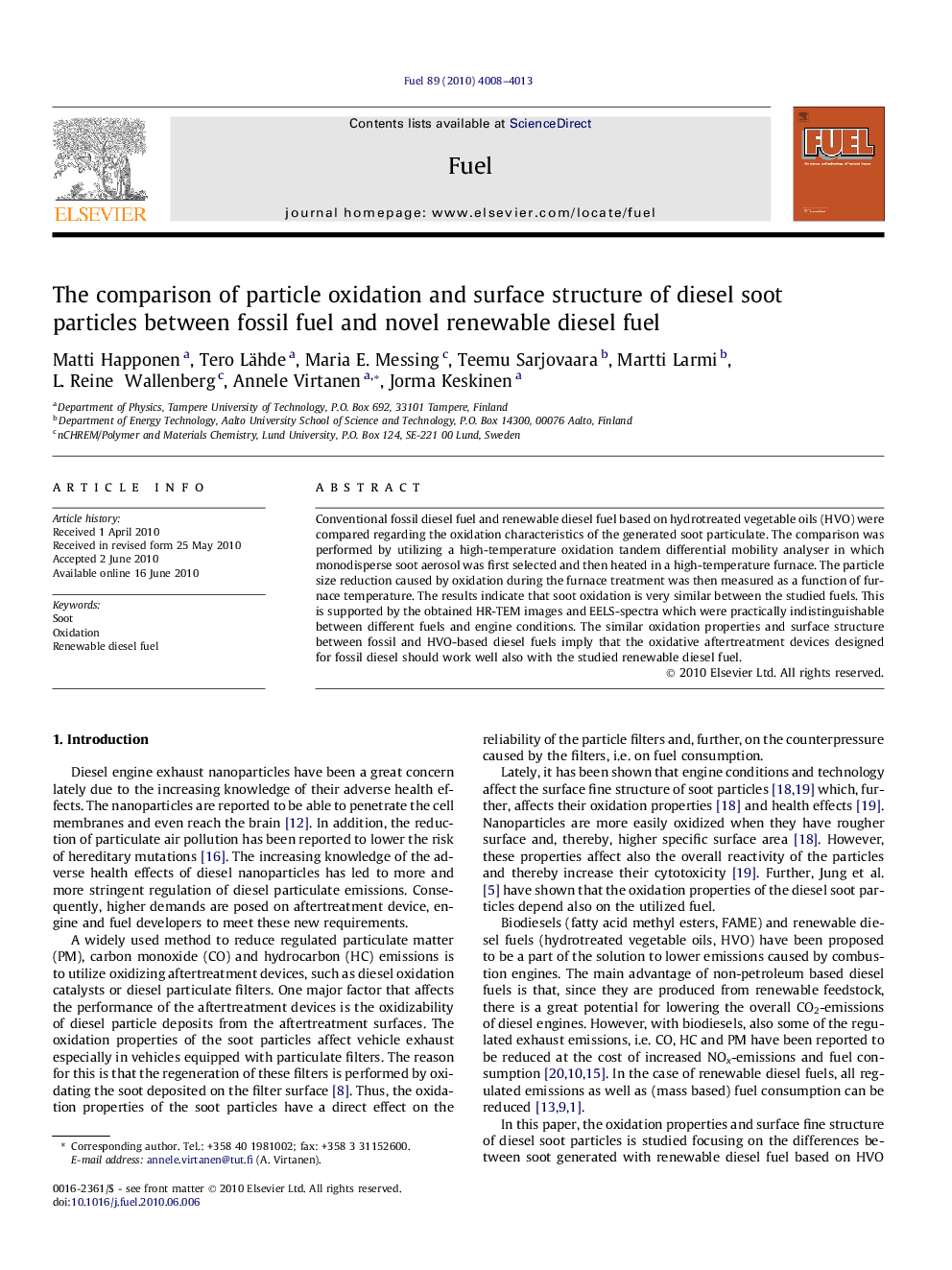| Article ID | Journal | Published Year | Pages | File Type |
|---|---|---|---|---|
| 206488 | Fuel | 2010 | 6 Pages |
Conventional fossil diesel fuel and renewable diesel fuel based on hydrotreated vegetable oils (HVO) were compared regarding the oxidation characteristics of the generated soot particulate. The comparison was performed by utilizing a high-temperature oxidation tandem differential mobility analyser in which monodisperse soot aerosol was first selected and then heated in a high-temperature furnace. The particle size reduction caused by oxidation during the furnace treatment was then measured as a function of furnace temperature. The results indicate that soot oxidation is very similar between the studied fuels. This is supported by the obtained HR-TEM images and EELS-spectra which were practically indistinguishable between different fuels and engine conditions. The similar oxidation properties and surface structure between fossil and HVO-based diesel fuels imply that the oxidative aftertreatment devices designed for fossil diesel should work well also with the studied renewable diesel fuel.
